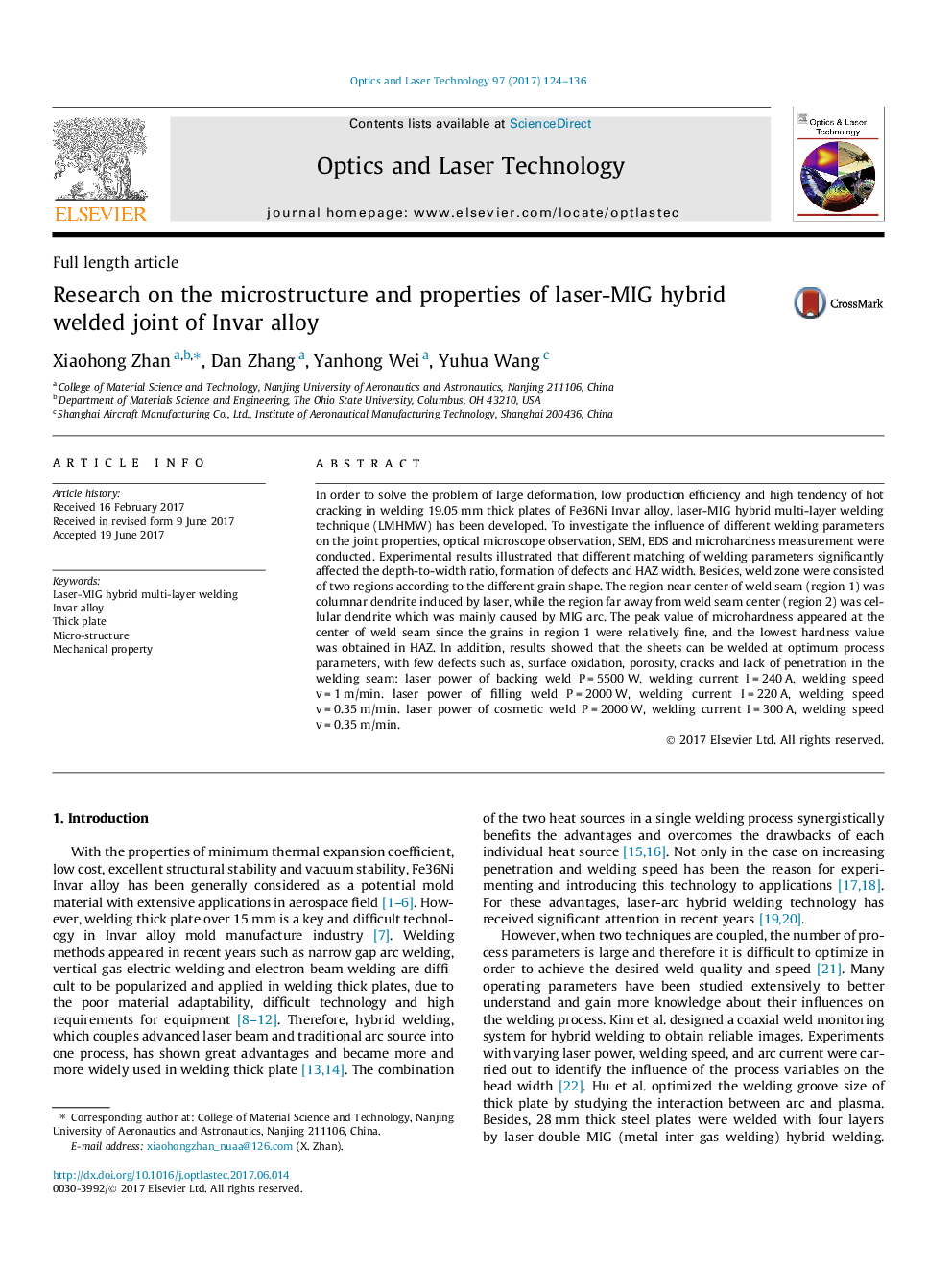| Article ID | Journal | Published Year | Pages | File Type |
|---|---|---|---|---|
| 5007502 | Optics & Laser Technology | 2017 | 13 Pages |
Abstract
In order to solve the problem of large deformation, low production efficiency and high tendency of hot cracking in welding 19.05 mm thick plates of Fe36Ni Invar alloy, laser-MIG hybrid multi-layer welding technique (LMHMW) has been developed. To investigate the influence of different welding parameters on the joint properties, optical microscope observation, SEM, EDS and microhardness measurement were conducted. Experimental results illustrated that different matching of welding parameters significantly affected the depth-to-width ratio, formation of defects and HAZ width. Besides, weld zone were consisted of two regions according to the different grain shape. The region near center of weld seam (region 1) was columnar dendrite induced by laser, while the region far away from weld seam center (region 2) was cellular dendrite which was mainly caused by MIG arc. The peak value of microhardness appeared at the center of weld seam since the grains in region 1 were relatively fine, and the lowest hardness value was obtained in HAZ. In addition, results showed that the sheets can be welded at optimum process parameters, with few defects such as, surface oxidation, porosity, cracks and lack of penetration in the welding seam: laser power of backing weld P = 5500 W, welding current I = 240 A, welding speed v = 1 m/min. laser power of filling weld P = 2000 W, welding current I = 220 A, welding speed v = 0.35 m/min. laser power of cosmetic weld P = 2000 W, welding current I = 300 A, welding speed v = 0.35 m/min.
Related Topics
Physical Sciences and Engineering
Engineering
Electrical and Electronic Engineering
Authors
Xiaohong Zhan, Dan Zhang, Yanhong Wei, Yuhua Wang,
